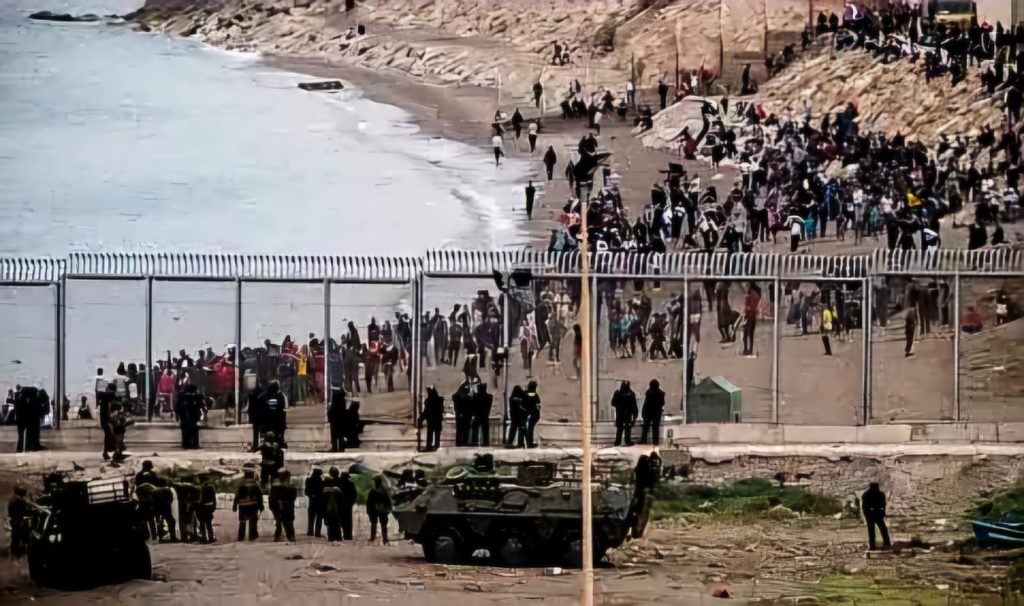On Sunday, Moroccan authorities successfully halted a major migration effort as hundreds of individuals attempted to cross into the Spanish enclave of Ceuta. This operation was reportedly triggered by social media campaigns encouraging the crossings, which led to a surge in attempts
Ceuta, along with Melilla—another Spanish territory located on Morocco’s Mediterranean coast—has long been a focal point for irregular migration. These enclaves are unique as they are the only European Union territories that share a land border with Africa, making them prime targets for those seeking to enter Europe.
On the day of the incident, large groups of people, including Moroccans, migrants from other African countries, and several minors, gathered in the village of Fnideq, situated close to Ceuta. Moroccan officials, aware of the increased risk due to the online incitements, swiftly intervened to block their progress and prevent any further advancement toward the enclave.
In addition to this major attempt, another sizable crossing effort on the same day was similarly thwarted by Moroccan security forces. Authorities had heightened their vigilance around Fnideq, responding to the online calls for illegal migration and aiming to secure the border area more effectively.
Despite these robust measures, hundreds of young Moroccans managed to reach the vicinity of Ceuta. However, they were apprehended by the police overnight and subsequently returned to their home communities across Morocco, according to local news sources.
Between Monday and Wednesday of the same week, Moroccan authorities arrested 60 individuals for disseminating false information on social media that encouraged illegal migration attempts. This crackdown highlights the government’s efforts to combat the spread of misleading content that fuels unauthorized crossings.
Throughout August, Moroccan authorities reported significant figures in their efforts to control illegal migration. Over 11,300 attempts to cross into Ceuta were blocked, along with more than 3,300 attempts into Melilla.
While land crossings are a significant route for migration, the primary method for individuals traveling from Morocco to Spain is via the sea. By mid-August, more than 22,300 migrants had reached Spain’s Canary Islands, marking a dramatic 126% increase compared to the same period in 2023. This surge underscores the growing pressures on migration routes and the ongoing challenges faced by both Moroccan and Spanish authorities in managing migration flows.

